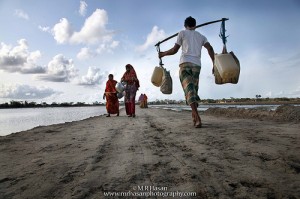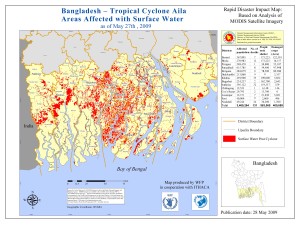The good news, up to a point, is that the south-western districts of the country have been recovering gradually from the effects of the Aila devastation of two years ago. The bad news is that despite such recovery, a clear environmental threat now hovers over the region, especially Satkhira, Khulna and Bagerhat. It is now quite impossible for any agricultural crops to be grown on it. Aila destroyed all the shrimp enclosures in the region, of course. But now that a large segment of farmers previously engaged in shrimp cultivation are planning to return to their original occupation as growers of rice, the salinity of the ground, caused by intensive shrimp farming, has come in the way.
 How badly the environment can be affected by thoughtless planning can be seen in the south-west of Bangladesh today. Shrimp cultivation has left 1,000,000 hectares of arable land badly affected by salinity. In all, 77 per cent of agricultural land in the region was given over to shrimp production. The consequences are now out there. Where farmers could, in pre-shrimp cultivation days, grow between 12 and 15 maunds of rice on a bigha of land, they can now expect no more than two maunds. The misery is compounded by the spectacle of trees and plants withering away owing to salinity. Deep tubewells pump out saline water, which poses an additional threat to health.
How badly the environment can be affected by thoughtless planning can be seen in the south-west of Bangladesh today. Shrimp cultivation has left 1,000,000 hectares of arable land badly affected by salinity. In all, 77 per cent of agricultural land in the region was given over to shrimp production. The consequences are now out there. Where farmers could, in pre-shrimp cultivation days, grow between 12 and 15 maunds of rice on a bigha of land, they can now expect no more than two maunds. The misery is compounded by the spectacle of trees and plants withering away owing to salinity. Deep tubewells pump out saline water, which poses an additional threat to health.
Damage control measures are called for. Policies which encourage pecuniary gains without taking note of environmental consequences clearly must be rethought. The damage caused to agricultural land in the south-western districts should be an eye-opener, both for the farming community and ‘experts’ who have encouraged the unbridled production of shrimp. We cannot afford to lose good land to myopic policies.
Source : THE DAILY STAR





































